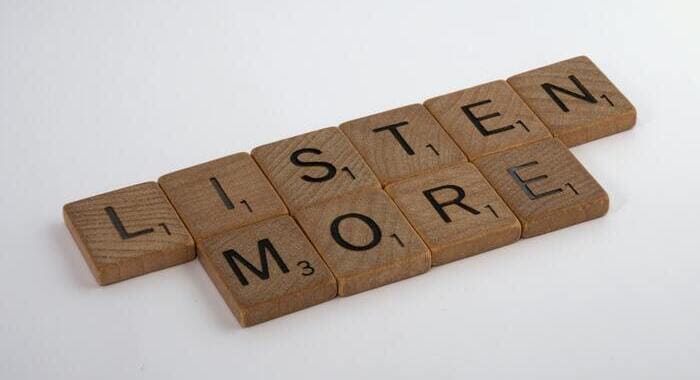How to greet customers and make a great first impression in sales.
If you greet your prospects, whether it’s in person or online, what should those first few moments look like?
- What should you say?
- How should you appear?
- Should you be excited?
- Should you be monotone?
Most importantly, how can you create a greeting that starts your influence in building a rapport quickly?
In this post, I’m going to share with you the secrets to a greeting that I call the Power Sales Greeting.
Building Stellar First Impressions: Examples to Build Your Power Sales Greeting
First off, there’s a mistake that many sales professionals make when it comes to meeting or greeting a prospect. That is they talk too much about themselves.
(1:32)
You have to realize that the goal of connecting with any prospect is for you to learn. Therefore, we need to start with a question.
Now that doesn’t mean I come up and say, “Hey, tell me more about yourself” without first covering off on a few basics. We’ll talk about those in a moment.
What I want you to think about when connecting or meeting a prospect, your goal is to get them talking.
Therefore, you need to have a good, solid question or a couple of questions that you ask in the first few moments of that conversation to get them talking so you can learn more about what it is that’s important to them.
Most importantly, you want to use your listening skills to gain intel that will help you position what you sell (down the road). So that’s the first thing I want you to consider.
 The second thing to consider is a lot of studies suggest that you’ve got anywhere from seven to 12 seconds to make a first impression. Now, whether it’s seven, whether it’s 12, whether it’s 32 seconds, it really doesn’t matter.
The second thing to consider is a lot of studies suggest that you’ve got anywhere from seven to 12 seconds to make a first impression. Now, whether it’s seven, whether it’s 12, whether it’s 32 seconds, it really doesn’t matter.
What I mean by that is those first few moments that we connect with a prospect, they’re actually gauging us. I don’t want to say they’re judging us, but they’re gauging us. They’re looking at us and saying, is this somebody that I want to get to know that I want to spend a little bit of time with?
Remember, when we’re meeting with a prospect, this give and take, I’m looking for some of their time, which is their most important or most valuable resource.
Initiate Your Greeting: 3 Simple Things
(2:17)
So the first few moments of that interaction matter. A couple of things for you to consider. In fact, three.
First off, smile.
 That might sound crazy, but did you hear how my voice changed when I smile a few meet somebody with a blank expression, it doesn’t have the same impression.
That might sound crazy, but did you hear how my voice changed when I smile a few meet somebody with a blank expression, it doesn’t have the same impression.
Think about the last time you walked by somebody on the street and they smiled at you, right?
How did that make you feel in the moment?
You probably thought, hold on a second.
Why are they smiling?
Do they know me? It got you thinking about them, which is the key.
So smile, and maintain eye contact. Notice, I’m creating this through a video. So essentially this is similar to a virtual meeting. I’m staring at that guy mimicking eye contact that I would use if I was in person. So you need to maintain eye contact.
It’s smile, it’s eye contact, and then you introduce yourself. “Hi, I’m Sean Casemore.”
Now I’m going to continue with that in a moment. But, you have to start by introducing yourself.
Don’t start with a question. Don’t start with some random, Hey, nice weather we have here.
Introduce yourself.
The first question that anybody has is, who is this person? You might as well answer that question.
So there are the three steps you can use during the initial greeting to kick things off and make sure you make a good first impression. Let’s move on to the next step.
Get Them Talking: 3-Step Script

(3:26)
The next thing I want you to consider is what I call a script. But before I talk about the script, (which builds on what I mentioned previously, which is introducing yourself) it gives you another couple steps you can add here to get things rolling.
I want to mention something about “small talk”.
Having spent years in my early twenties, which you can tell was quite some time ago, small talk was one of the ways I counted on or relied on to get a conversation going.
The problem is today, 30 years later, 25 years later, people are very busy. So if I’m to sit and talk about the weather and the news and whatever else, you don’t have time for it, and there’s a risk that I’m going to bore you to tears.
There’s a chance you’ll engage. But then if you do engage, we’re not talking about sales or selling at all, which is also a problem.
Small talk is okay, but keep the small talk small. Make it a small part of your sales conversation.
Here’s a better approach. Another three steps.
We talked about the initial three, those first moments, I’m going to give you another three steps in the form of a script you can use.
(4:21)
After you introduce yourself, you simply move into asking them a question, like I mentioned at the start.
Now, that question can vary, but generally you’re trying to find out why they’re here. What are they doing?
How to Greet Customers: Examples
- If you’re at an event, you might say, again, I’m going to give you a continuation. So I’ve said, “Hi, I’m Sean Casemore. What brought you to this event today?”
- Or, if I happen to drop by and see you at your office, “Hey, I appreciate you coming out to meet with me. I was wondering what you have on your agenda for the next half an hour because I want to meet with you for the next half an hour.” (Or I could say 15 minutes or 20 minutes. The shorter the better. You’ll know that if you watch my videos.)
Be relevant to the situation at hand and ask them a question because the goal is to get them talking.
- Now, in a virtual meeting there aren’t as many options to ask a question, but you can ask this one. You can say, “I appreciate you taking time out of your day. What did you want to ensure we covered today?” There’s another question you can use as an opener. It gets them talking.
So in this script, step one is to ask a solid question that’s relevant to the surroundings and the situation at hand, but that helps you understand more about them and their priorities.
Step two, once they’ve answered that, I want you to say this: “That’s great. I’d love to chat about that. There are a couple of things I want to cover as well. Where would you like to begin?”
Now, I can say that slightly differently, but here is the key. The key is we want to turn over the steering wheel, and the conversation driving to them.

(5:46)
Although we’re not really doing that, we’re just giving them a sense for doing that. So after they answer that initial question, I don’t jump into my pitch. I don’t try to defend why I am standing here or why I’m talking to them, because that makes it look like you are a salesperson.
What I really want to do is suggest there are a couple things I wanted to discuss with them or something I wanted to share with them or something I wanted their opinion on, right?
There are three different ways you can ask this next step. I want you to ask them what’s important to them.
Now I’m trying to blend what they might know of me so that I can gauge a starting point. Now, here’s why you asked this question. I’ve given you a couple examples of how to do this.
Your goal next is to discover if they know anything about you, your company, your product, or your service? I need to know that. Here’s why.
A lot of salespeople here jump into a sales pitch. “Well, I’m Sean Casemore. I work for company A, B, C. We service companies like X, Y, Z. These are the things we do. These are the ways we do it, and nobody cares.” Nobody cares. So as I transition through learning more about them and learning about their priorities, I want to try and understand what they know of my company, my product or service?
(7:12)
If anything, they might say, “I know nothing about it.” Great, we can start the conversation that way.
But if they do know something, I’m going to find out what that is. I don’t want to repeat it, I don’t want to bore them. Remember, we’ve got a very compressed timeframe to keep people’s attention.
So, as you work through this script, that next step is to say, “Well, tell me.” Here’s another example of how you might say this.
(7:49)
The point is, I have to first find out what they know of my company, our products or our services, by asking a simple question. Here’s what I want you to notice about these steps I’m sharing with you. They’re all questions. At no point am I jumping into a pitch.
I’m not a fan of a sales pitch, even an elevator pitch you might have. And when somebody says, “Tell me what you do”, I convert mine into a question. I say something like, “Well, we help companies accelerate their sales results. But you know what? Tell me a little bit about your sales and maybe I can give you some examples of how I would work with you.”
That’s my sales pitch. It’s a question. I’m trying to get them talking, and that’s the goal of this. If you want to have a good greeting, have good questions, get people talking. I have one more tip I want to share with you next.
Transition to the Opportunity: 3 More Steps
 (8:29)
(8:29)
Presuming by this point, you’ve followed all the steps I’ve shared and the conversation is progressing.
- You’ve learned what you need to learn.
- You’ve started sharing some information, asking more questions.
At some point, we want to transition this to an opportunity. Now, this is an initial, let’s say teams meeting online or I’ve met you at an event, right?
The circumstances in which I meet you are going to depend on this next step, but there are three steps to use here.
Notice the repetitiveness here.
Three steps to use to transition from that conversation to the opportunity. Here they are:
That doesn’t mean repeat everything they say. “So you’ve been working in the HVAC industry yourself for about 10 years, and it sounds like your company is looking for a new individual or a new company, if you will, to work on your air conditioners. Is that about right?”
I’m trying to validate that what I’ve heard is correct, and that allows them to kind of go through and recognize that this person has been listening to me. So that’s step one.
Paraphrase what you’ve heard so far. Bring a summary to the conversation.
(9:48)
So these are the three steps:
- Summarize the conversation.
- Suggest a meeting,
- Provide date and time options, specific date and time options.
These three steps will move you to the next opportunity. And if they say, “Well, I don’t really think it’s a good idea to meet. I’m not really that interested.” Let’s say that’s their response. Say, “Oh, interesting. I just really wanted to get your opinion on something, but now it doesn’t really seem like the right time. Even if you have five minutes, would that work for you?” So now I shorten the time duration of the meeting because clearly I haven’t built enough value in this case in the early part of my conversation.
Build Good Sales Greetings With Good Questions

(10:30)
But here’s the key to all of this. Good greetings come from good questions.
When I ask good questions, I get the other person talking. They become interested in me, my products, and my services, which means they’ll be willing to meet with me. And be sure to capitalize on those good questions in your close sequence.
© Shawn Casemore 2024. All Rights Reserved.


Share This Article
Choose Your Platform: Facebook Twitter Google Plus Linkedin